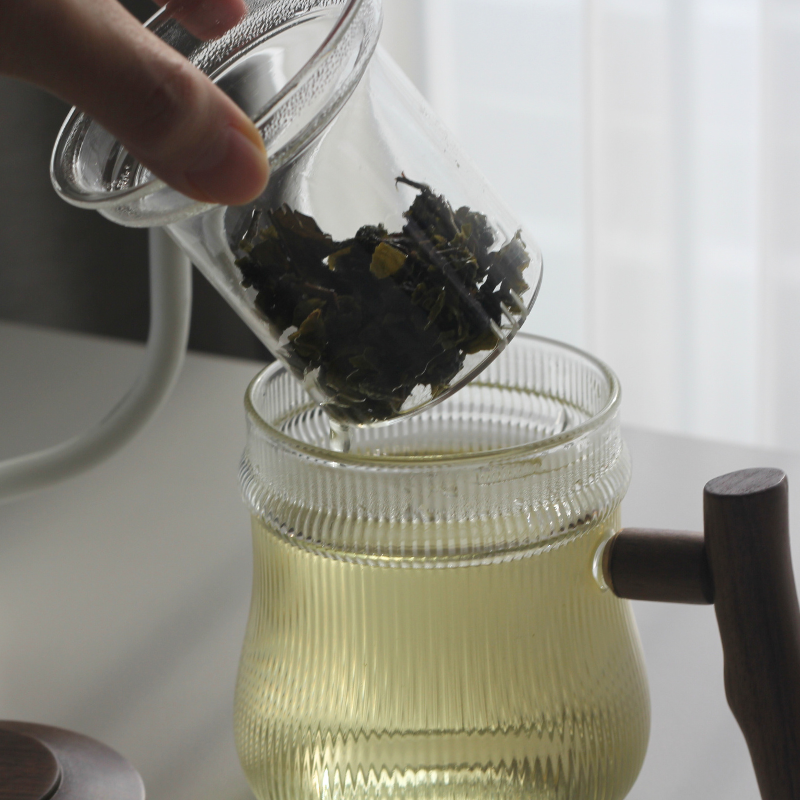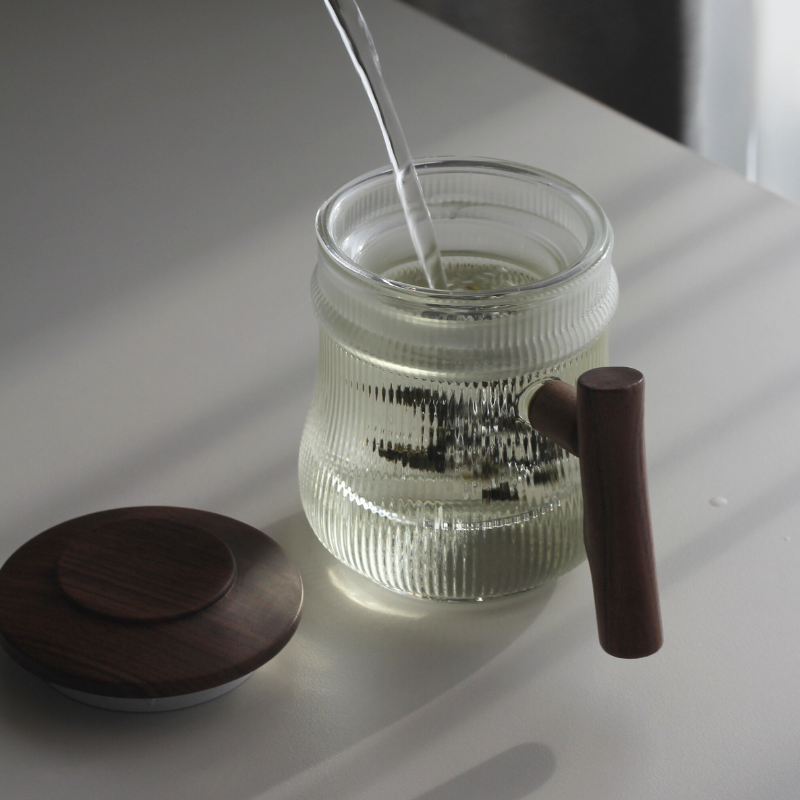TEA JOURNEY [11] | How to pick the best Oolong

Oolong tea, also known as Blue, is a partially fermented/oxidized or semi-fermented tea, with oxidation levels ranging from 15% to 70%. It's got a huge spectrum of flavors, and it's our staff's personal favorite type of tea to enjoy and gather around the table!
Its origins can be traced back to the 17th century in Fujian, China, where the method was developed by a farmer. In 1725, its production expanded, and it was exported to Europe. (Contrary to popular beliefs, black tea and oolong tea were not accidentally discovered due to green tea fermenting on the ship to Europe and found its way to become popular!)
One fascinating aspect of oolong tea is its vast range of varieties, influenced by factors such as region, tea tree species, harvesting time, oxidation process, roasting duration and method, rolling technique, and drying method. As a result, blue teas can vary from delicate and floral to bold and aromatic, offering a wide spectrum of flavors and hues, ranging from light yellowish green to deep amber.
Oolong tea encompasses characteristics of both green and black teas, making it a combination of their respective processing methods. This unique attribute gives rise to the terms "green leaves with red edges" and "three red, seven green" (referring to the colors visible when examining the unfolded leaves). The central part appears green, indicating less fermentation, while the edges display a reddish hue, signifying partial fermentation.
The image below is a lightly fermented oolong from Tea Juklim, called Mihong. The more red edges, the more oxidation and black tea-like notes and depths.

China produces approximately 230,000 tons of oolong tea annually, accounting for around 12% of the total tea production. It maintains an average annual growth rate of about 3.6%.
Key production regions for green tea include Minbei (North Fujian), Minnan (South Fujian), Guangdong, and Taiwan.
Taiwanese Oolong
Taiwan, located in close proximity to Fujian, has been heavily influenced by its tea production practices. With over half of its land situated at an altitude exceeding 200 meters, Taiwan provides favorable conditions for tea cultivation. The northern region experiences a subtropical climate, while the southern part has a tropical climate, with an average annual rainfall of approximately 2,500mm.
Tea cultivation in Taiwan began in 1796 when plants were introduced from Fujian. Commercial production and tea trade began in earnest in 1860 after the signing of the Treaty of Tianjin between Qing China and the United Kingdom (as a result of the the Opium War).
Initially, the production focus was on black and green teas primarily targeting the United States and Japan. However, due to competition with China in the 1980s, Taiwan shifted its attention to producing premium oolong tea.
Taiwanese oolong tea, recognized as a luxury product. The tea species varieties invented in Taiwan were reshored to China, and is now widely produced in mainland. It's called Taishi Cha (or Taiwanese Style Tea) and are produced massively and sold at cheaper price points.
Here are some renowned, fail-proof oolong varieties you can try.
Something interesting about oolong tea is that it retains the name of the tea tree variety as the product name. Moreover, oolongs usually have a distinct lingering aftertaste of sweetness that covers your mouth with floral notes. It's no wonder our Taiwanese staff's favorite as well!
Also, most premium oolongs are grown in the high altitudes of the mountains, yielding a strong flavor. Well, imagine the coffee belt -- the farms' emphasis on the fogs, temperature gaps, precipitation, fertile soils -- and apply that to tea cultivation practices times many more centuries.
renowned oolongs in China include Tie Guanyin (Iron Goddess), Huang Jin Gui (Golden Omanthus), Shui Xian (Water Spirit), Da Hong Pao (Big Red Robe), and Feng Huang Dan Cong (Phoenix Mountain Single Bush).
The Iron Goddess, Tie Guan Yin, is also one of the top 10 famous teas of China. From Anxi, Fujian, it has a sweet, nutty, a smooth lingering aftertaste (回甘).
The golden color of the tea and its distinct floral notes make the "Golden Omanthus" such a fitting name for Huang Jin Gui. Also from Anxi, Fujian, this variety is usually oxidized more lightly compared to its Iron Goddess counterpart.
Da Hong Pao, the Wuyi Rock's most famous sweet oolong is famous for its golden amber tea and the price tag. This tea variety has been cultivated for more than 300 years in the high altitudes, yielding a strong peaty, earthy notes. It has hints of stone fruit, brown sugar, and woody aromas. Its woody flavors are truly unique. If you ever encounter an offer to have authentic da hong pao, please ask twice if they're certain about it and take up the offer with gratitude.
Also called Dan Cong, the Phoenix Dan Cong is Fujian's biggest rival for oolong from the Canton (Guangdong) region. It's considered a darker oolong that makes darker orange colored tea.
Taiwan also has many varieties and high mountain locations that many enjoy, but for your sanity's sake, we'll keep this list down to just three. Taiwan's famous oolong teas include Bai Hao Oolong (also known as Oriental Beauty), Dong Ding Oolong (Frozen Summit), and Wen Shan Bao Zhong.
Oriental Beauty is indeed a famous tea that known by many around the world. This summer harvest tea is usually compared with India's second flush Darjeeling tea. Not a high mountain tea per se, but the nature works its magic to make the unique honey and fruity flavors bloom in summer. You can find Oriental Beauty in most tea shops in Taiwan, include boba shops and Starbucks!
Also known as the creamy oolong tea, Dong Ding Oolong remains to be a classic among Taiwanese teas with its mellow green flavors of the frozen summits in Taiwan's high mountains. The tea is typically finished with charcoal heating, yielding a lingering earthy flavors. Also quite lightly oxidized, this variety dates back to more than 150 years ago from Fujian. You can also find this in Taiwan's Starbucks!
Wen Shan is in the northern part of Taiwan, in fact very close to Taipei. It's one of the top quality teas you can get native to New Taipei City area and it yields a light liquor flavor with rich floral aromas. It's very lightly oxidized and picked in early spring, making the year's care to the plantation all the more important.






![TEA JOURNEY [13] | Tea Tasting Terminology](http://tingeofsoul.com/cdn/shop/articles/IMG_3072.jpg?v=1686898175&width=1080)
Leave a comment